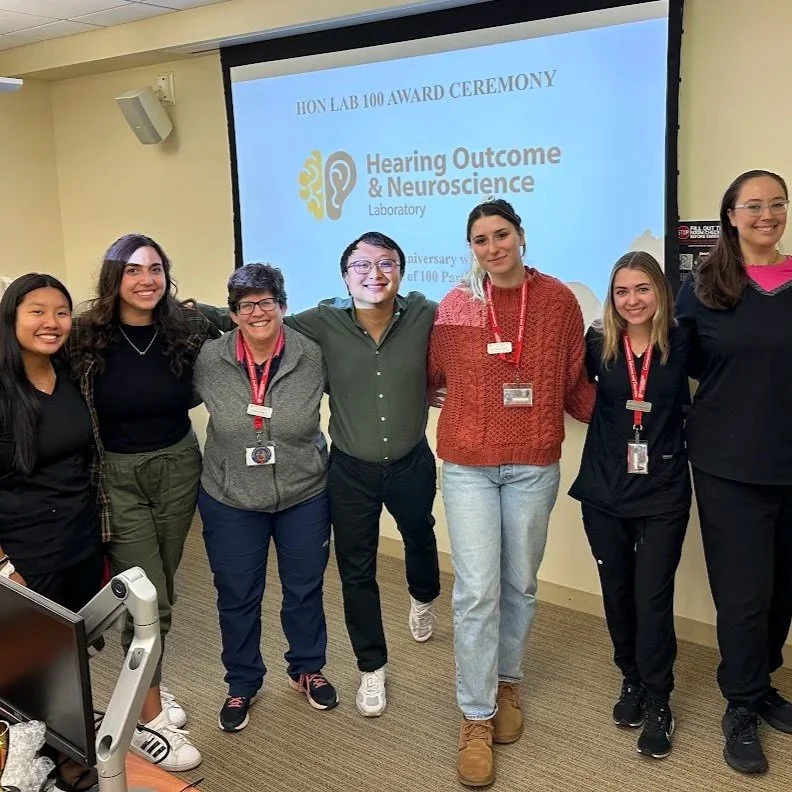By David Jung, M.D., Ph.D.
Hearing loss is associated not only with the loss of sensory hair cells in the inner ear, but also with the loss of nerve cells called spiral ganglion neurons (SGNs), as well as the synapses between surviving hair cells and SGNs. Improving SGN survival, neural outgrowth, and synaptogenesis (synapse formation) could lead to significant gains for patients with hearing loss.
Neurotrophic factors (molecules that regulate the growth and survival potential of neurons) might promote the survival of SGNs and the rewiring of sensory hair cells by surviving SGNs. In a paper published in Frontiers in Cellular Neuroscience in July 2021, my team and I detail how we have pioneered a hybrid molecule approach to maximize SGN stimulation through the use of small molecule analogues of neurotrophin-3 (NT-3). NT-3, in addition to brain-derived neurotrophic factor (BDNF), is the primary neurotrophin in the inner ear during development and throughout adulthood. Both have demonstrated potential for SGN survival and neurite outgrowth.
1Aa promotes neurite outgrowth in vitro. SGN neurite outgrowth in vitro. Neurites were stained with neuronal marker TuJ (red), and nuclei were labeled with DAPI (blue). Scale bar represents 100 μm. Images are representative of four independent experiments. Courtesy: Frontiers in Cellular Neuroscience
We have previously shown that a small molecule BDNF analogue can promote SGN neurite outgrowth and synaptogenesis in vitro. There is evidence that NT-3 will have a greater regenerative capacity in the cochlea than BDNF in a number of contexts. We therefore sought to develop a similar approach for NT-3 using 1Aa, a small molecule analogue of NT-3. To maximize the potential for drug delivery to the bone-encased cochlea, we also studied the activity of a bone-binding derivative of NT-3. This hybrid molecule links 1Aa to risedronate, which is a clinically used bisphosphonate molecule that avidly binds bone for the treatment of osteoporosis, to create Ris-1Aa.
Using an in vitro mouse model, we demonstrate that both 1Aa and Ris-1Aa stimulate neurite outgrowth and synaptogenesis in SGN cultures at a significantly higher level compared with controls. This result provides the first evidence that a small molecule analogue of NT-3 can stimulate SGNs and promote regeneration of synapses between SGNs and inner hair cells.
This work furthers the development of an effective drug delivery platform for the inner ear that uses the cochlear bone as a depot for prolonged neurotrophic stimulation of SGNs. Our method may bypass the pitfalls of systemic administration—increased risk of side effects and insufficient levels of drug delivery—and the dangers related to opening the cochlea.
As we have now described novel small conjugated molecules with neurotrophic activity in vitro, we anticipate that other small molecules with desired activities within the cochlea could potentially be delivered via this platform.
A 2018 Emerging Research Grants scientist, David Jung, M.D., Ph.D., (left) is an otolaryngologist at the Mass Eye and Ear and an assistant professor in otolaryngology–head and neck surgery at Harvard Medical School. Coauthor Judith Kempfle, M.D., is a research fellow at otolaryngology head and neck Surgery at Mass Eye and Ear and a 2010–2011 Emerging Research Grants awardee. Coauthor Albert Edge, Ph.D., is the Eaton-Peabody Professor of Otolaryngology–Head and Neck Surgery at Mass Eye and Ear and a member of the Hearing Restoration Project consortium. For more, see hhf.org/erg, hhf.org/hrp, and hhf.org/mtr.








Our partner Hyperacusis Research recently hosted a webinar that highlighted both the human impact of hyperacusis—pain triggered by everyday sounds—and the scientific progress being made to understand and treat it.